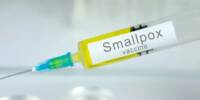Platelets are circulating cell fragments that cluster together and form blood clots, preventing bleeding in wounded capillaries. Cardiologists have long known that platelets can become “hyperreactive” and produce irregular clotting in arteries, contributing to heart attacks, strokes, and poor blood flow (peripheral artery disease) in millions of Americans’ legs.
Despite this significant contribution to cardiovascular risk, systematic monitoring of whether each patient’s platelets clump (aggregate) excessively has been impractical to date. This is because the results produced by the most common method for determining platelet activity, platelet aggregometry, differ significantly from lab to lab.
To address this challenge, a new studyled by researchers at NYU Grossman School of Medicine, precisely identified a group of patients with platelet hyperreactivity, and then surveyed them to reveal 451 genes the activity of which differed significantly in those with hyperreactive platelets versus those without. Publishing online August 20 in Nature Communications, the research team then used bioinformatics to assign a weight to each genetic difference and generate each patient’s Platelet Reactivity ExpresSion Score (PRESS).
Our results demonstrate that our new platelet-centric scoring system can, for the first time and across populations, circumvent aggregometry to reliably predict platelet hyperreactivity and the related risk of cardiovascular events.
Jeffrey Berger
“Our results demonstrate that our new platelet-centric scoring system can, for the first time and across populations, circumvent aggregometry to reliably predict platelet hyperreactivity and the related risk of cardiovascular events,” said corresponding study author Jeffrey Berger, MD, director of the Center for the Prevention of Cardiovascular Disease at NYU Grossman School of Medicine.
The researchers found that their new score can detect platelet hyperreactivity, both in patients at imminent risk of heart attack, and in healthy patients whose future risk may otherwise remain unknown.
“Physicians currently prescribe aspirin, a medication that counters platelet activity, to patients based on available risk factors, including high cholesterol or high blood pressure, which are not directly related to platelet function,” added Berger. “PRESS promises to help physicians confine anti-platelet treatment to the people most likely to benefit: those with platelet hyperreactivity.”
By acting on platelets, aspirin is known to protect against abnormal clotting, but in doing so, increases risk of bleeding, said the study authors. The field needs a reliable way to identify patients for whom protection against heart attack outweighs bleeding risk.

Platelet Score
Progress toward the design of the PRESS began with a shift in the field away from aggregometry methods that expose each patient’s platelets to high doses of proteins known to strongly encourage aggregation. Platelets that do not aggregate under these extreme conditions are labelled dysfunctional, but these tests were not designed to directly assess hyperreactivity.
Experience on Berger’s team and in other labs working with platelets led to a switch to an aggregometry method that instead exposes platelets to a very small dose (4 μM or microMolar) of epinephrine known to weakly encourage aggregation. The field settled on 60 percent aggregation in platelet sample at 0.4 μM of epinephrine as the threshold over which platelets would be designated as hyperreactive. While this method is not new, the current study provided new evidence that patients meeting this hyperreactivity definition are at much greater risk for cardiovascular events.
The team specifically used the newer, but still labor-intensive, aggregometry method to track the impact of platelet activity status on MACLE (major adverse cardiovascular and limb events), a composite measure of death, heart attack, stroke, and lower extremity amputations in patients enrolled in the Platelet Activity and Cardiovascular Events in PAD (PACE-PAD) clinical study. MACLE was assessed in this group of high-risk patients following lower extremity revascularization (LER), a set of treatments that unblock blocked arteries.
In 254 PACE-PAD patients whose platelet aggregation was measured with 0.4 μM of epinephrine, 17.5% showed hyperreactive platelets, and those patients with hyperreactivity had more than double the incidence of heart attack, stroke, or acute limb ischemia or major amputation within the 30 days after LER than those without hyperreactivity.
Despite their unique expertise in aggregometry, the team’s goal was to develop a generalizable risk assessment that may one day be easily done in physicians’ offices. To make worldwide implementation viable, the researchers created PRESS using a genetic signature that is independent of blood collection methodologies and other aggregometry-related characteristics.
To develop PRESS, the researchers obtained platelet genetic data from 129 PACE-PAD patients before to their LER treatment and constructed the score around the genetic differences associated with hyperreactivity. The researchers confirmed the score’s accuracy by comparing it to platelet aggregation tests.
To further confirm PRESS, the researchers investigated the relationship between the score and cardiovascular risk in a variety of other patient groups. Among these was the Heart Attack Research Program, which included women undergoing coronary angiography. In this group, those who had a heart attack had greater PRESS levels than those with stable coronary artery disease. Patients with lower extremity atherosclerosis who were followed for an average of 18 months had a 90% higher risk of having a major cardiovascular incident if their PRESS score was higher than the middle (average).
“In current practice, anti-platelet therapy is not routinely recommended for the prevention of a first heart attack or stroke, but a platelet-based test would help to identify patients at highest risk, and those who would benefit most from anti-platelet therapy to prevent a cardiovascular event,” says study author Tessa Barrett, PhD, assistant professor in the departments of Medicine and Pathology at NYU Langone. “Our score has the potential to further personalize cardiovascular disease risk prevention.”
















